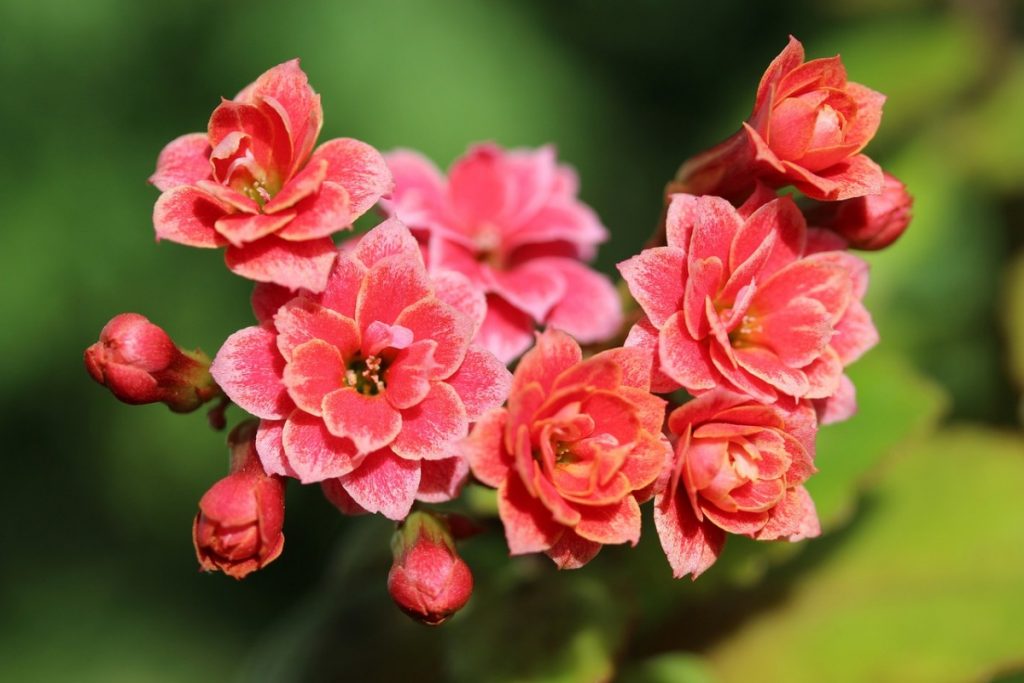Who would not love to have some colorful succulents in their house, or in their garden? However, it is important to remember that not all succulents are safe for humans and pets.Kalanchoe is actually one of the plants you have to be careful with, especially if you have curious children running around the house.
To put it as simply as it is, kalanchoe is poisonous to humans and pets. It has a natural-occurring poison that can severely affect the heart. It is similar to digoxin, a common ingredient for heart medications. And just like with many ingredients in medications, if you ingest them in bigger quantities the cure becomes a poison. Hence if you want to be 100% sure to stay safe, I recommend you getting some beautiful hanging planer (for example this porcelain beauty from Amazon), and keeping your Kalanchoes in safe distance from everyone in the house.
Table of Contents
How much you ingest determines the impact of the poison in Kalanchoe
The severity of the impact dependens on the amount of the plant you ingest. Of course your body weight also plays a role. When a ten kilo child ingests the same quantity as a hundred kilo adult, the impact will be 10 times higher (speaking in simple terms). Generally speaking, more you eat the greater the danger. The signs of poisoning involve drooling, nausea, vomiting, and abnormal heart rate.
If you have pets indoors, you also need to be careful. The poisonous substance in kalanchoe can also harm your pets such as dogs and cats. I highly recommend that you keep the kalanchoe plants away from children and pets.

Is it really that poisonous to humans?
Some sources indicate that kalanchoe is poisonous, and if ingested in huge quantities it can even lead to death. However, there are other sources that say kalanchoe is not poisonous to humans, simply because the toxins inside aren’t strong enough to affect us. In my opinion though, with such conflicting opinions, it is better to be safe than sorry with the plant.
What about livestock? Can it eat kalanchoe?
In fact kalanchoe is toxic to many animals due to its cardiac glycosides content. The glycosides have a severe impact on the heart of animals. Cases of livestock deaths have been reported from many areas where this plant grows in free land, and animals grazed on it.
The blossom of kalanchoe has more toxins than any other part of the plant. It explains why there are more incidents of animal poisoning when this plant is in bloom, and animals graze on the flowers.
Is kalanchoe poisonous to dogs and other pets?
Kalanchoe is dangerous to pets for the same reason is is dangerous to cows an sheep. As a rule of a thumb dog (let alone cat) won’t eat the plants. These animals prefer other foods, and unless they are extremely hungry, they won’t opt for attacking and eating the plants.
However, I have read about a few incidents, and the common signs of poisoning were drooling, stomach pain, and diarrhea. In severe cases, cardiac effects are the worst. If this happens to your pet, take it immediately to your vet, so it can have the content of stomach pumped out, and you will at least limit the severeness of the poisoning.
Other succulents that are poisonous to humans and pets
Some other succulents are poisonous to human and pets. I have a decent list online here for dogs, but you can use it for any other pets. I know it may surprise you, just like I was when I started my career of succulent grower, since I did not also even think that some succulents could be harmful to pets or humans.
If you are not sure whether your succulent is safe or not, I suggest that you do some research before placing the plant inside, especially if you noticed that your dog may be tempted to eat the plants. The truth is that when dogs have stomach cramps or stomach pain, they like to eat some grasses. And if the only grasses they find at home are succulents that are poisonous for them, they may eat them, and it may not end well. That’s why it is better to take precautions.
Final Thoughts
To make sure that you can sleep calmly, and work without worrying what’s going on back home while you are absent, I suggest you to keep away Kalanchoes from your kids and pets. This is because kalanchoes are potentially poisonous–there’s isn’t an unanimous agreement on whether they are for humans or not, but they clearly are for pets.
If you ingest it accidentally however, you should seek doctor’s help, especially if you start feeling unwell. If your pet has eaten it, bring your pet to the nearest vet clinic immediately. Signs of poisoning are vomiting, nausea, and stomach pain. I hope this helps, and wish you good luck with both your plants and animals! Don’t forget to check also my complete guide on succulent growing, to make sure you do everything right with these amazing plants.
FAQ
Q: Are succulents toxic to humans?
A: Not all succulent varieties are poisonous to humans. But there are a few like kalanchoes and euphorbias that are poisonous to humans when ingested. Euphorbias in particular can cause skin irritation when you touch its sap. If you are growing poisonous succulents at home, make sure that kids and pets–and anyone who may be tempted to try how they taste, cannot access them. Prevention is the best cure, and this case is no exception to the rule.
